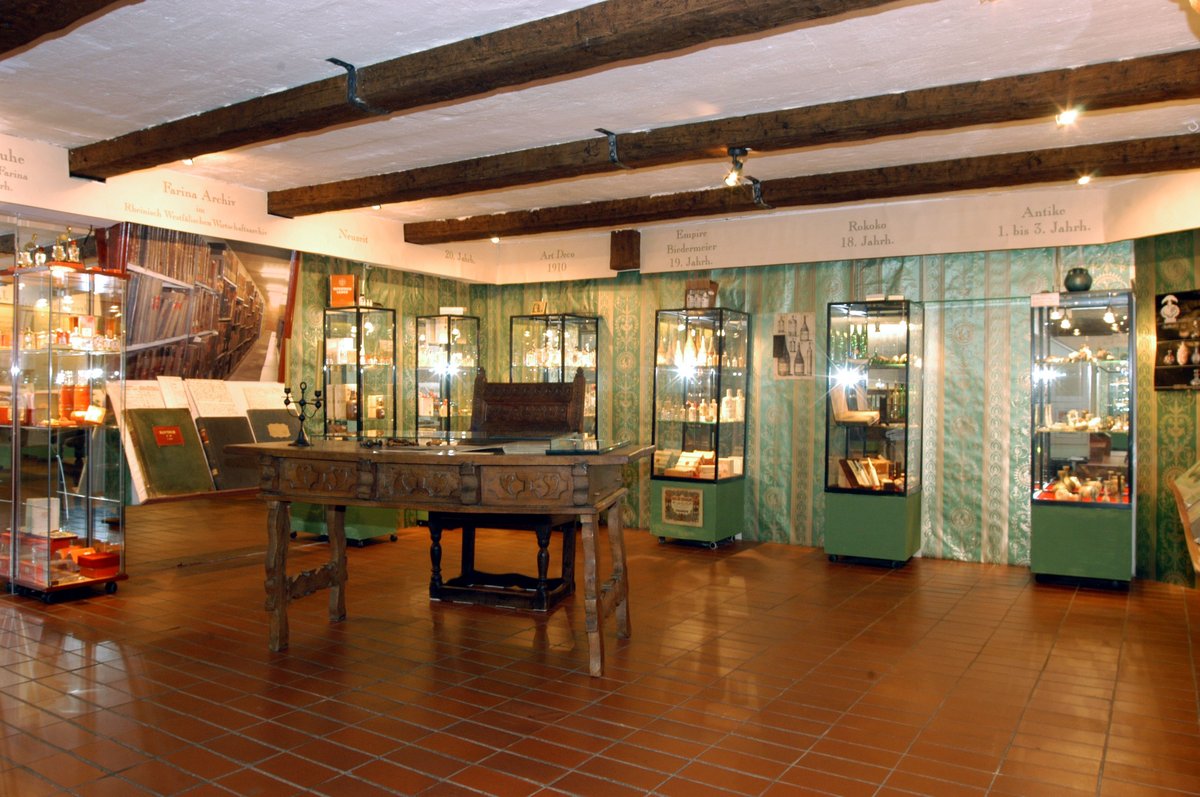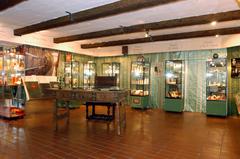
Visiting Duftmuseum im Farina-Haus: A Complete Guide
Date: 19/07/2024
Introduction
The Duftmuseum im Farina-Haus, located in Cologne, Germany, stands as a monument to the rich history and art of perfumery. This iconic museum, established in the original building where Johann Maria Farina created the world-renowned Eau de Cologne in 1709, offers visitors a unique journey through the evolution of fragrance (Farina Duftmuseum). The museum not only celebrates the legacy of Farina but also provides an immersive experience into the cultural and economic impact of perfumery on European society. Through meticulously preserved artifacts, guided tours, and interactive exhibits, visitors gain a comprehensive understanding of the art and science behind perfumery, as well as the enduring influence of the Farina family on the industry.
Table of Contents
- Visiting Duftmuseum im Farina-Haus
Visiting Duftmuseum im Farina-Haus
History of Duftmuseum im Farina-Haus
Origins and Establishment
The Duftmuseum im Farina-Haus is dedicated to the history of fragrance and the legacy of Johann Maria Farina, the creator of Eau de Cologne. The museum is housed in the original building where Farina established his perfume factory in 1709, making it the oldest fragrance factory in the world (Farina Duftmuseum).
Johann Maria Farina, an Italian perfumer, moved to Cologne in the early 18th century. Inspired by the scents of his homeland, he sought to create a fragrance that captured the essence of an Italian spring morning. In 1709, he succeeded in creating a light, citrus-based perfume, which he named “Eau de Cologne” in honor of his adopted city. This fragrance quickly gained popularity among European royalty and the upper class, establishing Farina’s reputation as a master perfumer.
Growth and Influence
The success of Eau de Cologne led to the rapid expansion of Farina’s business. By the mid-18th century, the fragrance was being exported across Europe, and the Farina name became synonymous with luxury and quality. The Farina family continued to innovate and expand their product line, introducing new fragrances and refining their production techniques.
The Farina-Haus itself is a testament to the family’s enduring legacy. The building has been meticulously preserved, with many original features still intact. Visitors to the museum can see the original distillation equipment, storage rooms, and even the office where Johann Maria Farina worked. The museum also houses an extensive collection of historical documents, including letters from famous clients and original sales records.
Historical Significance
The Duftmuseum im Farina-Haus is not just a museum; it is a living piece of history. The Farina family’s contributions to the world of fragrance have had a lasting impact, influencing the development of modern perfumery. The museum provides a unique insight into the history of fragrance production and the cultural significance of perfume in European society.
One of the most notable aspects of the museum is its collection of historical artifacts. These include original bottles of Eau de Cologne, some of which date back to the 18th century. The museum also features portraits of the Farina family and their famous clients, as well as a variety of other historical items related to the production and marketing of perfume.
Preservation and Restoration
Over the years, the Farina-Haus has undergone several restoration projects to preserve its historical integrity. These efforts have been led by the Farina family, who remain actively involved in the museum’s operations. The most recent restoration project was completed in 2011, in time for the 300th anniversary of the founding of the perfume factory. This project included the restoration of the building’s façade, as well as the renovation of several interior rooms.
The museum’s commitment to preservation extends beyond the physical building. The Farina family has also worked to preserve the historical records and artifacts related to their business. This includes digitizing many of the original documents and creating detailed records of the museum’s collection. These efforts ensure that the history of the Farina-Haus and its contributions to the world of fragrance will be preserved for future generations.
Visitor Information
Ticket Prices and Opening Hours
Planning a visit to the Duftmuseum im Farina-Haus? Here are the details you need:
- Ticket Prices: Adult tickets are priced at €5, while children under 12 can enter for free. Group discounts are available for parties of 10 or more.
- Opening Hours: The museum is open from Tuesday to Sunday, 10 AM to 7 PM. It is closed on Mondays and public holidays.
Travel Tips
- Location: The museum is conveniently located in the heart of Cologne, making it easily accessible by public transport. The nearest tram stop is Appellhofplatz.
- Best Time to Visit: To avoid the crowds, consider visiting during weekday mornings.
- Photography: Photography is allowed in most areas of the museum, but flash photography is prohibited to protect the artifacts.
Nearby Attractions and Accessibility
Cologne is rich in historical sites and attractions. While visiting the Duftmuseum im Farina-Haus, consider exploring nearby landmarks such as the Cologne Cathedral, the Romano-Germanic Museum, and the Museum Ludwig.
The Duftmuseum is wheelchair accessible, with ramps and elevators available for visitors with mobility issues.
Special Events and Guided Tours
The Duftmuseum im Farina-Haus offers a variety of educational programs and exhibits designed to engage visitors and provide a deeper understanding of the history of fragrance. These programs include guided tours, workshops, and special exhibits that explore different aspects of perfume production and history.
One of the most popular programs is the guided tour, which takes visitors through the various rooms of the Farina-Haus and provides detailed information about the history of the building and the Farina family. The tour also includes a demonstration of the traditional methods of perfume production, using the original equipment and techniques developed by Johann Maria Farina.
In addition to the guided tours, the museum offers a variety of workshops and special exhibits. These programs are designed to provide a hands-on experience and allow visitors to learn more about the art and science of perfumery. The workshops cover topics such as the history of fragrance, the chemistry of perfume, and the techniques used in modern perfume production.
Frequently Asked Questions (FAQ)
Q: What are the opening hours of the Duftmuseum im Farina-Haus? A: The museum is open from Tuesday to Sunday, 10 AM to 7 PM, and is closed on Mondays and public holidays.
Q: How much are the tickets for Duftmuseum im Farina-Haus? A: Adult tickets are priced at €5, while children under 12 can enter for free. Group discounts are available for parties of 10 or more.
Q: Is the Duftmuseum im Farina-Haus wheelchair accessible? A: Yes, the museum is wheelchair accessible, with ramps and elevators available for visitors with mobility issues.
Q: Can I take photos inside the museum? A: Photography is allowed in most areas of the museum, but flash photography is prohibited to protect the artifacts.
Conclusion
The legacy of Johann Maria Farina and his creation, Eau de Cologne, continues to be felt today. The Duftmuseum im Farina-Haus serves as a testament to his contributions to the world of fragrance and his lasting impact on the industry. The museum’s extensive collection of historical artifacts and documents provides a unique insight into the history of perfume production and the cultural significance of fragrance in European society.
The Farina family’s commitment to preserving their history and sharing it with the public ensures that the legacy of Johann Maria Farina will continue to be celebrated for generations to come. The Duftmuseum im Farina-Haus is not just a museum; it is a living piece of history that offers a unique and engaging experience for visitors.
For more information about the Duftmuseum im Farina-Haus, including visitor information and details about upcoming exhibits and programs, visit the official website.
References
- Farina Duftmuseum. (n.d.). Retrieved from https://www.farina.org/






































































